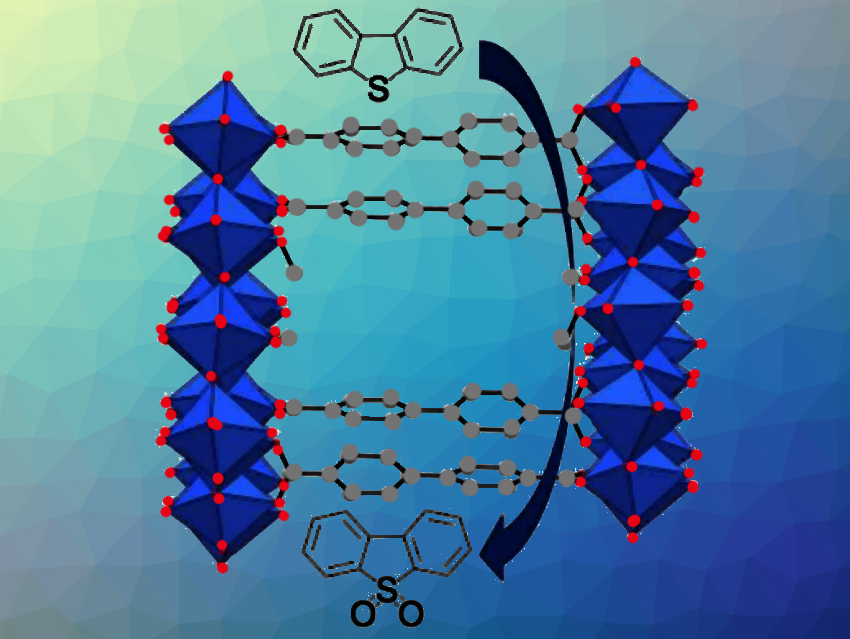Metal–organic frameworks (MOFs) are porous materials with many applications. Titanium-based MOFs are rare within this class of materials. TiIV tends to form ill-defined oxyhydroxides, and consequently, titanium MOFs are difficult to synthesize.
Bart Bueken, KU Leuven, Belgium, and colleagues, have synthesized a MOF called COK-47, which is the first titanium carboxylate featuring inorganic sheets of TiIVO6 octahedra pillared by organic 4,4′-biphenyldicarboxylate linkers. Each linker connects with one carboxylate to an edge-sharing pair of octahedra, while the other carboxylate binds to a corner sharing TiO6 pair in the next sheet. Depending on the synthesis conditions, the material can be prepared as well-defined rod-shaped crystals or highly defective nanoparticles.
The defective form of COK-47 is a promising catalyst because it contains a high density of coordinatively unsaturated titanium atoms and a large pore volume. The researchers discovered that COK-47 can oxidatively desulfurize dibenzothiophene in the presence of tert-butylhydroperoxide. Moreover, COK-47 photocatalytically degrades the organic dye rhodamine 6G under UV light.
- A Titanium(IV)-based Metal-Organic Framework Featuring Defect-Rich Ti-O Sheets as an Oxidative Desulfurization Catalyst,
Simon Smolders, Tom Willhammar, Andraž Krajnc, Kadir Sentosun, Michael T. Wharmby, Kirill A. Lomachenko, Sara Bals, Gregor Mali, Maarten B. J. Roeffaers, Dirk E. De Vos, Bart Bueken,
Angew. Chem. Int. Ed. 2019.
https://doi.org/10.1002/anie.201904347




